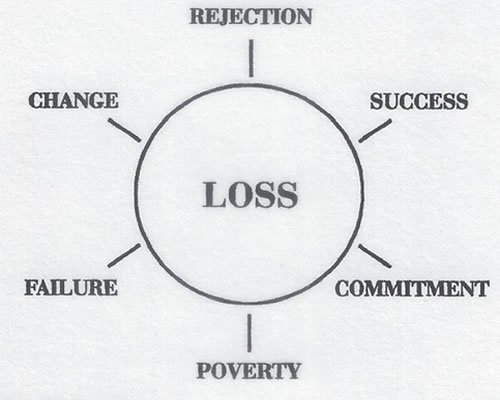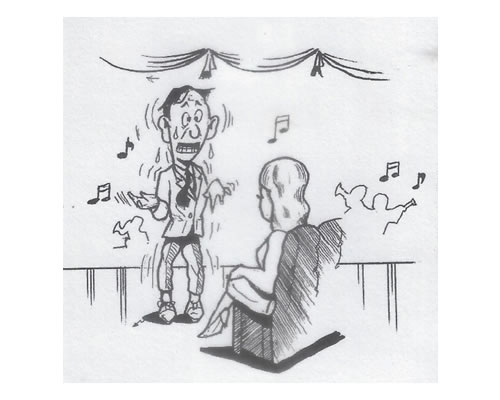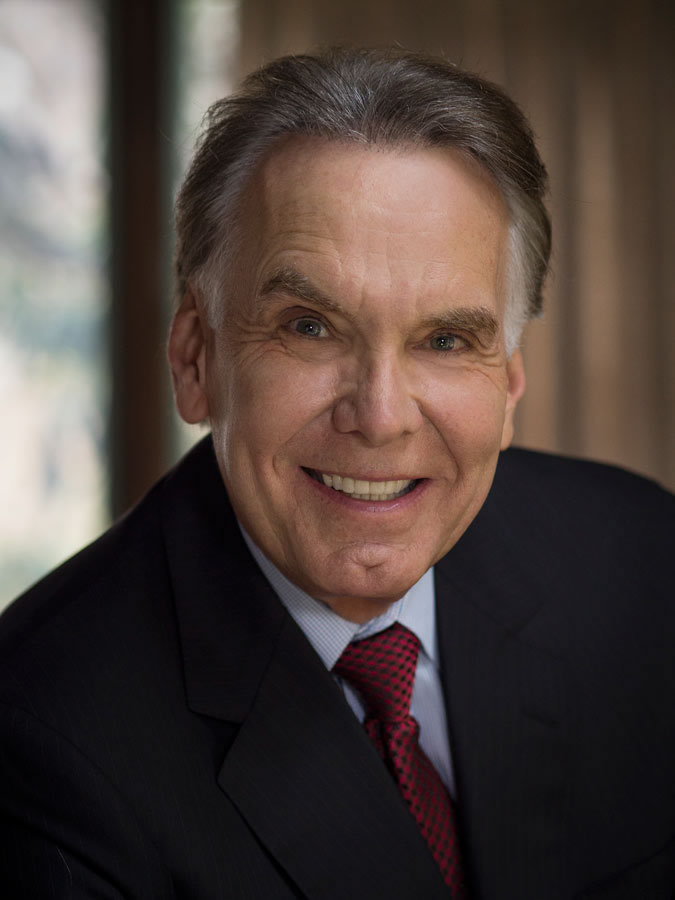Turn Fear Into Power
“The Magic of Quantum Leap Thinking™” Part 6: Turn Fear Into Power
Fear is my teacher. Fear can be motivating. Fear is my playground.
So, do you have fear? Of course, you do.
Consider the majority of fears an echo from your very distant past.
Fear contaminates the groundwater of our awareness.
Fear does not actually exist; it is an illusion, nothing more than False Evidence Appearing Real = F.E.A.R.
I know this may be difficult to mentally digest but, you project your fears outward on the world; then you accumulate the necessary evidence to prove them to be true. I know fear feels real, looks real, and you can back it up with facts. You see what you believe, and what you see becomes proof. Almost always you have imagined it. Imagination is the source and the power of fear
Fear doesn’t exist anywhere except in the mind.
– Dale Carnegie
Understanding the Role Fear Plays In Our Lives
Fear has its place. Fear may save our lives. It lies in the deepest recesses of our genes. Our DNA still lingers the echo of basic survival. The challenge is that many of us still unconsciously respond to the primitive ‘fight or flight’ mechanism which, once upon a time, served us so well. Lions and tigers and bears take on different forms like someone who cuts us off in our car, a rude cashier, an arrogant waiter, or someone who believes differently than us. We can unconsciously interpret minor annoyances as threats to survival and act accordingly.
Fear is not necessarily destructive. Fear can be invigorating and motivating. Famous actors, sports figures, artists, dancers, salespeople, and public speakers often admit they have butterflies before they go on stage, either in a contest or approaching a perspective client. Many of them say that they feel lost without that ‘delicious’ tingle of fear. The feeling gives them energy and focus.

Fear is an incredibly strong emotion, and it often triggers a negative response but it has its place.
As an entertainer and speaker for more than four decades, I can attest to that. I always feel the nibbles of fear before I give a presentation or perform a show. I have learned to immediately turn it into power and energy the moment I walk on stage.
You can do that in any aspect of your life.
Identifying The Types Of Fears We Face In Life
Our fears grow from an elementary fear of loss: loss of control, love, esteem, or health. I view the fear of loss as a center of a wheel to which are attached the spokes of secondary fears.

1. FEAR OF CHANGE
As long as you continue to stretch and grow, you will experience a form of fear. It is a natural part of the growth process. Instead of wasting energy being careful to avoid discomfort and fear, you want to learn to accept fear as a partner. This is a major ‘paradigm shift’ for the majority of us. Remember, you are not alone.
“Make friends with change.”
2. FEAR OF REJECTION
Fear of rejection can jeopardize our self-esteem and our sense of feeling loved. It may trigger a self-protective mechanism. It does not matter if we are making love, working, or partying. Unconsciously, we withdraw. We rationalize that if we do not put ourselves in the position of being turned down, we can avoid rejection. Unfortunately, when we choose to avoid confrontation, fear becomes reality; we are isolated and victimized, often without awareness.
Fear of rejection can manipulate us to be aggressive, controlling, possessive, or jealous. Our logical mind tells us our behavior is justified. We tell ourselves, “If I can only control those around us, they cannot reject us.”
If we are possessive or jealous, we believe we can hold onto the people we love. That is an illusion.
The real result is that by being controlled or feeling controlled, people often feel trapped. Therefore, they flee or just go emotionally dead because they have been pushed away. We created rejection when what we wanted most was acceptance.

“Make friends with rejection.”
3. FEAR OF FAILURE
It is no mystery that fear of failure lurks around.
Certainly, I had a lot in my childhood. I was afraid of failing, of disappointing my mother. Therefore, I often froze on exams. Thus, I failed a lot. It became a self-fulfilling prophecy, until it did not.
Our childhood experiences have a great deal of influence on how we deal with fear. If, at home or school, we were threatened with humiliation or punishment for failing, the fear of punishment can affect us, as adults, from taking the risks necessary for learning and growth. We become so entangled with the possibility of failure that we may choose to play a much smaller and safer game than we are capable of playing. Then, we stick to the things that are safe and easy. And often, we do not recognize it.
It is natural to have a fear of failure when you start a new business, begin a new relationship, prospect for new clients, ask for help, learn to ski, talk to an angry customer, present a new idea to the boss, or tell the truth.
The flip negative side of playing it safe is taking unnecessary, enormous, impetuous, reckless risks. Taking risks then, is no longer a tool for growth and learning; it manifests itself as taking foolish chances. The result is often the same: failure.
My advice again, “Make friends with failure.”
4. FEAR OF SUCCESS
Fear of success is intriguing. Most people believe they want to be successful, but they seem to set up their own obstacles: too much work, too much responsibility, too much sacrifice.
These things may be true, but the real resistance is caused by this: success is change which frequently creates resistance.
Unbelievably, lack of success often creates a secret sense of relief. We like the status quo. Or should I say, our subconscious likes the status quo. We become adjusted to the status quo even if it is uncomfortable or ugly. It becomes part of us. We may live in “tolerable discomfort,” an unhappy situation. Even though we created it, it has become easy and familiar.
5. FEAR OF POVERTY
As of this writing, more than 13% of children in the United States are raised in poverty, and our imaginings cannot even come close to the poverty in some Third World countries. We know what real poverty is, but it does not have half the power as imagined poverty.
Buried underneath the fear of poverty is the dreaded specter of death. Our survival is threatened when we imagine not having enough to eat, or a safe place to sleep. It touches our most primitive concerns. But the fear of not having enough can be as destructive as reality.
We often create our own brand of poverty. We may choose to spend more than we make; we then try to earn more, but we spend more than we have. Or we put everything we earn under the mattress, in the bank, or between the pages of the book. Our car may be falling apart, or our clothing in shreds, but we choose, out of fear of not having enough, to save the money we have rather than spend it. The prophecy is self-fulfilling; we feel poor.
6. FEAR OF COMMITMENT
Commitment can represent loss of control and freedom. It is an act both of vulnerability and courage. We may fear that once we make a commitment, we cannot go back; but no one – no parent, teacher, government, official, or manager – can make you commit to anything if you do not want to. You may say ‘yes’, you may go through the motions, but you will be operating out of compliance, not commitment. You will only deeply commit when, for you, the payoff is greater than the sacrifice.
THE SOLUTION IS TO LEARN TO SHIFT YOUR THINKING
Fear is an incredibly strong emotion, and it often triggers a negative response.
How can we turn that powerful emotion into something that can work for us? This requires both awareness and a major shift in our thinking.
Give the following ‘awareness’ exercises a try:
A. Recall something from your past that scared you or, think of something negative that could happen in the future. Vividly imagine that scenario. Hold the thought for a minute or so.
Pay attention to your body. Where do you feel the fear? Do you feel discomfort in your stomach, chest, shoulders, or does it make your hands sweat?
You may tell yourself you are not afraid, but your body will always let you know the truth. The messages you receive by paying attention to your body will be signals that something is wrong, needs to be examined, prevented, or needs to be changed in reality or perception
B. Next, think of something that excites you. Recall it vividly. Once again, pay attention to your body.
Once you are aware, you can turn fear into power by simply changing your point of view. See the paradoxical cube in this article.
You can determine which side of the paradoxical cube was prompted by your point of view, like fear. You can switch perspectives to make any side stand out. Your choice.
Nothing changed, except how you looked at the cube. You can turn fear into power the same way. Consciousness shifts, and the way you see things can take place when you challenge what you believe to be true. You can do that when you see and recognize the illusions that create fear and then turn to power.
I leave you with two ‘magic question’ when you examine your personal fear:
- “What’s the worst that can happen and can I handle it?”
- “What’s the best that can happen and can I handle it?”
Face the fear and do it anyway.
IMAGINE THAT!
James Mapes is a keynote speaker, best-selling author, coach and hypnotist. His most recent book IMAGINE THAT! Igniting Your Brain for Creativity and Peak Performance is the first web-supported book with access to 21 video-coaching clips.

James Mapes is the founder of Quantum Leap Thinking™, creator of The Transformational Coach™, expert on the psychology of “applied imagination,” best-selling author, highly acclaimed business speaker, consultant, seminar leader and personal excellence coach.
